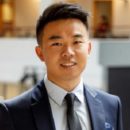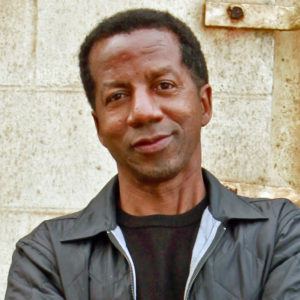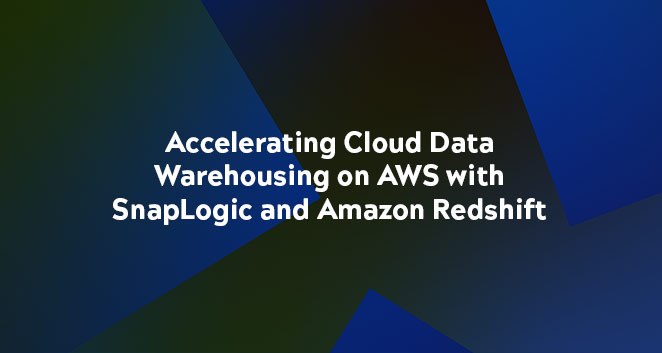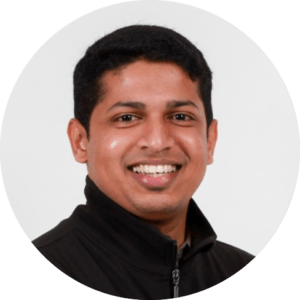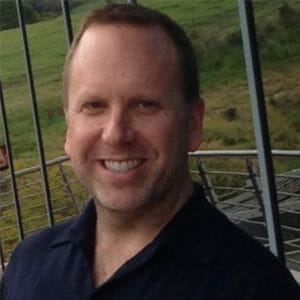Amazon Redshift is one of the most widely used cloud data warehouses and analytics services among enterprises today — chiefly for its ease of use and capacity to handle exabytes of data at lightning speeds, and for being far more cost-effective than other data warehouse solutions. Run by Amazon Web Services (AWS), Amazon Redshift is used for multiple business use cases such as powering business intelligence tools, operational analytics, and user behavior analytics. If you’re considering Amazon Redshift to optimize data analytics, here is a brief overview.
What is Amazon (AWS) Redshift?
Amazon Redshift is a fully managed, petabyte-scale data warehouse service from Amazon Web Services (AWS) that enables fast and cost-effective data analysis using standard SQL and existing business intelligence tools.

Amazon Redshift enables you to query and combine petabyte-scale of structured and semi-structured data across your operational database, data warehouse, and data lake using standard SQL. You can save query results back to an S3 data lake using open formats, such as Apache Parquet or Optimized Row Columnar (ORC), which enables you to perform additional analytic queries. It uses Massively Parallel Processing (MPP) technology and, like most AWS services, is easy to deploy with just a few clicks, with many options to import data. There are also numerous tutorials to help you quickly understand how to get a Redshift cluster up and running in minutes. It delivers high performance and fast performance — imperative to enterprises today.
It’s also known for its favorable pricing. AWS states that Amazon Redshift has up to 3X better price-performance than other cloud data warehouses and that the price-performance advantage improves as you expand from gigabytes to petabytes. How does it do this? By taking advantage of proprietary hardware and machine learning (ML), the Redshift database uses the AWS Nitro System to accelerate data compression and encryption, analyze queries, and graph optimization algorithms to automatically organize and store data for exceptionally fast results.
Additionally, Amazon offers AQUA (Advanced Query Accelerator) which is distributed and hardware accelerated cache that allows Redshift data queries to run up to 10X faster than other enterprise cloud data warehouses. It accelerates scanning, filtering, and aggregation operations, and Amazon reports it will accelerate more operations in the future.
Overall, Amazon Redshift is easy to use, handles the massive amounts of big data that enterprises generate and consume, and alleviates the need to manage infrastructure.
Which use cases are best suited for AWS Redshift?
AWS Redshift stands out as a powerful tool in the realm of data analysis, catering to diverse needs with its petabyte-scale data warehousing capabilities. Its versatility shines across various scenarios:
- Business Intelligence: Companies can swiftly execute complex queries on vast datasets. For instance, a retail chain might use Redshift to analyze sales trends across seasons and regions.
- Operational Analytics: Redshift excels in processing semi-structured data. IT teams, for example, can analyze application logs to pinpoint system inefficiencies or identify popular app features.
- Data Sharing: Redshift’s secure environment facilitates data collaboration. A pharmaceutical company could share research data with partner labs, ensuring both security and accessibility.
- Predictive Analytics: Integration with Amazon SageMaker empowers businesses to delve into machine learning. A finance firm might predict stock market trends based on historical data and current market conditions.
- Big Data Transition: Organizations moving from traditional systems to cloud solutions find Redshift’s scalability invaluable. Media companies, dealing with vast amounts of video data, can efficiently store and retrieve content.
In essence, whether you’re a budding startup or an established enterprise, AWS Redshift offers a tailored solution to harness the potential of your data. Its adaptability ensures that diverse sectors, from healthcare to entertainment, can make data-driven decisions with confidence.
What are the benefits of using Amazon Redshift?
Why use Amazon Redshift?
Amazon Redshift stands out as a holistic data warehousing solution, offering a range of benefits tailored to meet diverse data challenges. Here’s an in-depth exploration of its multifaceted advantages:
- Robust Security: Amazon spearheads cloud security, allowing users to concentrate on safeguarding their applications. Key features encompass:
- Access Control: Dictate who accesses your data and to what extent.
- Data Encryption: Ensure your data remains protected both during transit and while at rest.
- Virtual Private Cloud (VPC): Establish a secluded environment for secure resource operations.
- Automated Backups: With Redshift, your data is automatically backed up across multiple locations, guaranteeing data integrity and availability.
- Efficient Automation: Redshift transforms routine tasks, offering automation for activities like generating scheduled reports, overseeing audits, or executing regular maintenance.
- Dynamic Scalability: Redshift’s scalability is a testament to its adaptability. It doesn’t just scale; it does so intelligently. As your workload increases or decreases, Redshift adjusts in real-time, ensuring you always have the right amount of resources. This dynamic adjustment means businesses can handle peak data loads without overprovisioning and incurring unnecessary costs.
- Seamless Integration: Redshift’s integration capabilities are twofold. Naturally, it melds effortlessly with other Amazon services. However, its API extends this harmony to third-party applications. Platforms like SnapLogic elevate this integration. With SnapLogic’s iPaaS (Integration Platform as a Service), businesses can automate integration processes, craft data pipelines with ease, and empower even non-technical team members to integrate data as needed.
- Vibrant Partner Ecosystem: AWS’s expansive partner ecosystem offers a rich selection of third-party applications and services. Whether you’re in search of niche tools or expert implementation services, the AWS partner network is a reservoir of resources.
In summary, Amazon Redshift isn’t just another data warehouse—it’s a comprehensive tool designed to revolutionize data handling, analysis, and value extraction for businesses.
What is the Amazon Redshift pricing model?
Amazon Redshift offers a flexible and cost-effective pricing model that stands out for its adaptability to various business needs. Here’s a detailed breakdown:
- Cost Efficiency: One of Redshift’s primary attractions is its competitive pricing. Amazon claims that Redshift operates at a lower cost than other data warehouses. Starting at just $0.25 per hour (as of 2021), it can scale to accommodate petabytes of data and support thousands of users.
- Diverse Pricing Options:
- Pay-as-you-go: This model allows businesses to pay for only the resources they use, ensuring optimal cost management.
- On-demand Pricing: With this model, businesses can opt for pricing that adjusts based on their usage, providing flexibility without long-term commitments.
- Additional Models: Amazon Redshift offers other pricing structures tailored to specific business requirements, ensuring that organizations can choose the best fit for their needs.
- Pricing Calculator: To assist businesses in understanding their potential expenses, Amazon offers the AWS Redshift Pricing Calculator. This tool provides a clear breakdown of costs, helping organizations budget effectively.
- Guidance on Amazon Pricing: For those new to the AWS ecosystem or those looking to understand the nuances of Redshift’s pricing, Amazon provides guides to navigate the various pricing options available.
In essence, Amazon Redshift’s pricing model is designed with flexibility in mind, catering to both startups on a tight budget and large enterprises with vast data needs. The various pricing options ensure that businesses can find a model that aligns with their financial and operational requirements.
How does Amazon Redshift handle large-scale data operations?

Amazon Redshift’s prowess isn’t just limited to its data warehousing capabilities; it’s also renowned for its ability to manage and process vast amounts of data seamlessly. Let’s delve into how Redshift handles large-scale data operations:
- Compute Nodes and Their Role: At the heart of Redshift’s data processing capabilities are its compute nodes. These nodes are responsible for storing data and executing query components. As data volumes grow, Redshift can add more compute nodes, ensuring that data processing remains efficient regardless of the scale.
- Integration with Amazon S3: Amazon Redshift works in tandem with Amazon S3, a highly scalable object storage service. This integration allows for efficient data imports and exports, ensuring that large datasets can be moved seamlessly between Redshift and S3.
- Relational Database with PostgreSQL: Redshift’s relational database is built on top of PostgreSQL, which means it inherits PostgreSQL’s robust features. This foundation allows Redshift to handle complex queries on large-scale datasets with ease.
- Concurrency and DynamoDB: Redshift’s concurrency scaling feature ensures that multiple queries can be executed simultaneously without performance degradation. Additionally, integration with DynamoDB allows for real-time data analytics, making it possible to analyze vast amounts of data in near real-time.
- IAM and Security: With Identity and Access Management (IAM), Redshift ensures that data access is both controlled and secure. IAM allows for the creation of policies that dictate who can access Redshift and what actions they can perform.
- Serverless and Cloud-Based Operations: Redshift’s serverless architecture means that businesses don’t have to worry about infrastructure management. Being cloud-based, it offers the flexibility to scale resources up or down based on demand, ensuring cost-effectiveness.
- Integration with AWS Services: Redshift’s cloud computing capabilities are enhanced by its integration with various AWS services. Whether it’s RDS for relational databases, IAM for access management, or Redshift Spectrum for exabyte-scale data analysis, Redshift works seamlessly with other AWS offerings.
- Connectivity with JDBC and ODBC: Redshift supports both JDBC and ODBC connectors, ensuring that it can integrate with a wide range of applications and tools.
In conclusion, Amazon Redshift’s ability to handle large-scale data operations stems from its robust architecture, integration capabilities, and the backing of AWS’s vast ecosystem. Whether it’s processing petabytes of data or ensuring real-time analytics, Redshift is equipped to handle the challenges of modern data-driven enterprises.
How does Amazon Redshift ensure optimal performance and security in cloud computing?
Navigating the vast landscape of cloud computing, Amazon Redshift emerges as a beacon for businesses aiming to harness the power of their data. Let’s explore how Redshift ensures both performance and security in this domain:
- Leveraging Compute Nodes for Efficiency: Redshift’s architecture is built around compute nodes, which are pivotal in storing data and executing queries. As the amount of data grows, Redshift can dynamically increase the number of nodes, ensuring consistent performance regardless of data volume.
- Harnessing the Power of Amazon S3: Redshift’s synergy with Amazon S3 is undeniable. This integration facilitates swift data transfers, making it feasible to handle large-scale datasets with ease.
- The PostgreSQL Foundation: At its core, Redshift’s relational database system is grounded in PostgreSQL. This ensures that even when dealing with traditional data structures, Redshift can execute complex queries efficiently.
- Concurrency and Its Advantages: With increasing data demands, concurrency becomes crucial. Redshift’s ability to handle multiple queries simultaneously, combined with its integration with DynamoDB, ensures real-time data analytics.
- IAM: A Pillar of Security: Redshift’s commitment to security is evident in its integration with Identity and Access Management (IAM). This tool allows businesses to define precise access permissions, ensuring data remains in the right hands.
- On-Premises and Cloud-Based Flexibility: Redshift supports both on-premises and cloud-based deployments. This flexibility ensures businesses can choose a deployment model that aligns with their operational needs.
- Serverless Operations for Scalability: Redshift’s serverless architecture is a game-changer. It eliminates the need for infrastructure management, allowing businesses to focus on data analysis.
- Seamless Integration with AWS Services: Redshift’s prowess in cloud computing is amplified by its seamless integration with a suite of AWS services, from RDS for relational databases to Redshift Spectrum for extensive data analysis.
- Connectivity Options with JDBC and ODBC: Integration is a breeze with Redshift, thanks to its support for JDBC and ODBC connectors, ensuring compatibility with a myriad of applications.
- SSL and Security Groups: Redshift employs SSL for encrypted connections and utilizes security groups to define access rules, further bolstering its security framework.
- Python, Microsoft, and Beyond: Whether you’re looking to run Python scripts or integrate with Microsoft tools, Redshift’s compatibility range is vast, catering to diverse business needs.
In essence, Amazon Redshift’s commitment to performance and security in the realm of cloud computing is unwavering. Its robust architecture, combined with the expansive AWS ecosystem, ensures that businesses can confidently navigate their data-driven journeys.
Amazon Redshift vs Amazon S3: A comprehensive comparison
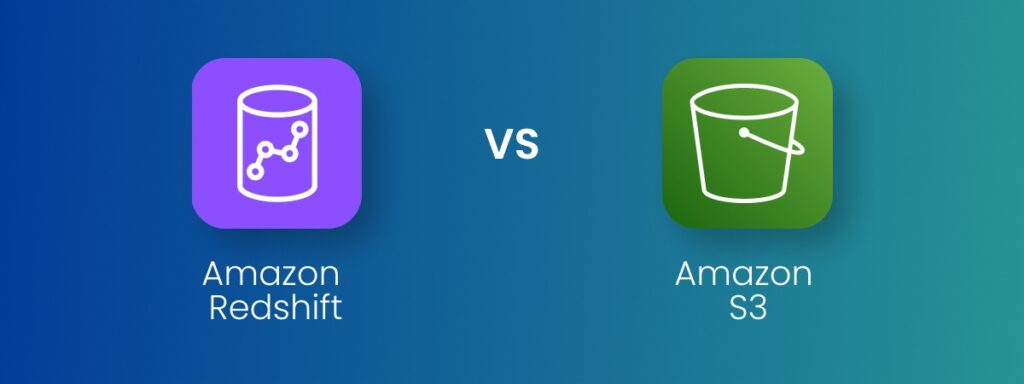
Amazon Redshift and Amazon Simple Storage Solutions (S3) are two of the most popular data storage solutions provided by Amazon Web Services (AWS). While both are designed to store data, they serve different purposes and are optimized for different use cases. Here’s a detailed comparison to help you understand their distinct features and functionalities:
- Purpose and Data Type
- Amazon Redshift: Primarily used for structured data, Redshift is akin to a cloud data warehouse. It offers tools for real-time and predictive analysis. The data within Redshift must be structured in a predefined format.
- Amazon S3: S3 is versatile, capable of ingesting structured, semi-structured, and unstructured data. It functions more like a data lake, storing data from various sources, including videos, pictures, and log files.
- Data Storage Category
- Amazon Redshift: A columnar database and data warehouse, Redshift is optimized for online analytical processing (OLAP). Its columnar storage facilitates faster data aggregation, allowing analysts to execute complex queries swiftly.
- Amazon S3: S3 is an object storage solution, ideal for storing diverse data types. It’s commonly used in Extract, Transform, Load (ELT) data pipelines.
- Use Cases
- Amazon Redshift: Given that data within Redshift is already structured, it provides rapid insights and forecasts. It can directly feed data into business intelligence tools.
- Amazon S3: S3 is leveraged by organizations to consolidate vast volumes of varied data formats in a single repository. Analytic tools can then be used on this data to derive insights. Data lakes, like S3, are preferred for their ability to handle unstructured data, flexibility, affordability, and capability to store high volumes of data for predictive analytics.
- Cost Structure
- Amazon Redshift: Operates on an hourly payment model, starting at $0.25 per hour. The pricing varies based on the node type and the number of nodes in the cluster.
- Amazon S3: Offers a pay-as-you-use model, making it an affordable storage option. Users only pay for what they consume, with no minimum charge. Data lakes, like S3, often prove to be more cost-effective for companies with diverse and voluminous data.
In conclusion, while Amazon Redshift is tailored for structured data analysis in a warehouse setting, Amazon S3 provides a flexible storage solution for a wide range of data types in a data lake environment. The choice between the two largely depends on the specific data storage and analysis needs of an organization.
Can I integrate Amazon Redshift with SnapLogic?
As mentioned earlier, you’ll need to integrate your data sources in a way that automates the process in real-time. SnapLogic enables you to easily integrate data with multiple pre-built connectors without needing data scientists to do so. SnapLogic integrates with the Redshift API so you can be confident your data warehousing processes are automated and fast.
SnapLogic and Amazon Redshift have joined forces to simplify data integration and data warehousing via the cloud. Together, SnapLogic and AWS enable organizations to unlock critical insights and operational efficiencies through the democratization of data, increasing your organization’s ability to scale, respond, and compete effectively. With SnapLogic and AWS, data flows securely, without friction or impediment, across an entire organization, regardless of the source or application, bringing the best of the cloud to Amazon customers.
SnapLogic is a certified partner for native integration with the Amazon Redshift Console. Using SnapLogic, you can accelerate data onboarding and produce valuable insights in minutes, and quickly move data from hundreds of applications including Salesforce, Workday, ServiceNow, Google Analytics, Facebook Ads, Slack, Jira, Splunk, and Marketo into an Amazon Redshift data warehouse, in an efficient and streamlined way.
Learn more about how SnapLogic and Amazon Redshift work together.
Trivia Question: How did Amazon Redshift get its name?
No doubt you’ve googled “redshift” and come across a lot of talk about space, and expanding universes, and NASA (we did!). So, what is a “redshift” exactly? Well, in physics, a redshift is an increase in the wavelength and corresponding decrease in the frequency and photon energy of electromagnetic radiation, such as light. (By the way, the opposite is called a blueshift.) In astronomy, there are three main causes for a redshift:
- Radiation is traveling between distant objects that are moving apart (a relativistic redshift, like a relativistic doppler effect).
- Radiation is traveling towards an object in a weaker gravitational potential – a gravitational redshift.
- Radiation is traveling through an expanding space, like the expansion of the universe – a cosmological redshift. Incidentally, Hubble’s Law (after Edwin Hubble) is the observation that all sufficiently distant light sources show redshift corresponding to their distance from the Earth.
Why did AWS name it Redshift? Well, according to Google, it had nothing to do with physics and everything to do with moving away from their competitor Oracle’s corporate red branding — quite literally a shift away from Oracle’s red, aka “Redshift”. Clever, huh?



